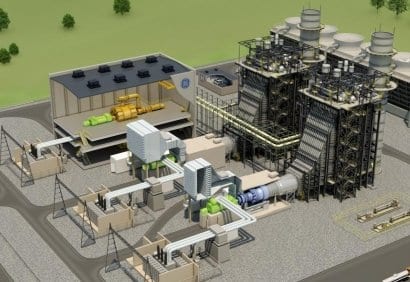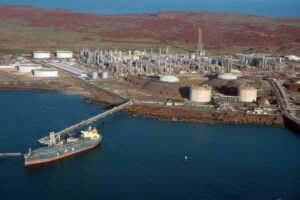
General Electric is sinking billions of dollars into natural gas turbines and power plants as the answer to the world’s need for cleaner and more flexible power. It’s also investing heavily in software to manage every aspect of electricity generation, distribution and consumption, in the form of its internet of things (IOT) offering, which it calls the “industrial internet.”
On Tuesday, GE put those two businesses together in the form of its Digital Power Plant offering. The IOT-equipped, cloud-supported software suite aims to squeeze increased flexibility and efficiency out of existing and new gas-fired power plants, to the tune of $50 million to $230 million in added value per plant.
GE also announced its first Digital Power Plant customers: New Jersey’s Public Service Enterprise Group (PSEG) for its gas-fired generators, and multi-state generator Exelon for nuclear, gas and wind power. The white paper accompanying Tuesday’s announcement mentions a “digital wind farm” with $100 million in potential savings, alongside the emphasis on natural gas.
GE has made a big push into next-generation gas turbines that can ramp up and down more efficiently, helping to lower the costs of bringing additional flexibility to the grid. That’s something that utilities and grid operators are looking for to help manage the intermittency of wind and solar power, whether from minute to minute or over the course of an entire day.
GE claims its software can make these generators “behave like a virtual battery,” Ganesh Bell, GE’s chief digital officer, said in a Tuesday briefing. That could open up new opportunities in providing flexible capacity and quick-responding ancillary services for grid markets, depending on what type of power plant you’re starting with.
GE adds asset performance, power plant operations, and linkages to energy market and financial management software to allow this flexibility to be built into a company’s entire decision-making process. All of this, in turn, is supported by its data analytics platform, built to analyze and optimize every piece of its equipment over the internet someday. The company is holding its Minds + Machines conference this week, and is inviting partners to check out its white paper later Tuesday and come up with applications to build on the platform, he said.
All told, this improved asset performance, reduced fuel consumption, decreased unplanned downtime and maximized operational efficiency should yield up to $230 million over 20 years for one of GE’s next-generation power plants, according to Steve Bolze, president and CEO of GE Power & Water. Existing baseload plants could get about $50 million in value over a 20-year period, Bell said. GE equipment generates about one-fifth of the world’s electricity today, and the company sees a $75 billion opportunity in its existing natural-gas power plant customer base, Bolze said.
GE competes with Siemens, Mitsubishi Hitachi Power and acquisition target Alstom for the world’s natural-gas turbine business, and it’s not the only one that’s been working on this kind of flexibility and efficiency in its newest models. Nor is it the only company promising a wraparound software-and-device-connectivity platform to better manage them.
While GE has been surging on natural gas, it’s been retrenching on batteries — at least on building its own. In January, it announced layoffs and slowdowns in production at the factory that makes its Durathon batteries, a sodium-ion chemistry that GE has spent four years and $170 million building and deploying, at small scale so far. Its most recent grid-scale energy storage projects have been as a systems integrator of lithium-ion batteries.
At the same time, GE has been downplaying the cost-competitiveness of utility-scale batteries against cheap natural gas for broader grid needs. “I would argue the best storage is gas in the pipeline and fast-reacting turbines — and understanding when that renewable generation is going to fall off,” Mark Wight, director of strategy, marketing and operations for GE Energy Ventures, said last year.
Source: Greentech Media. Reproduced with permission.










